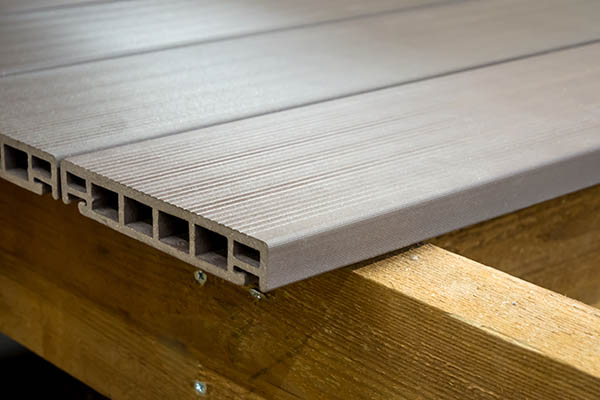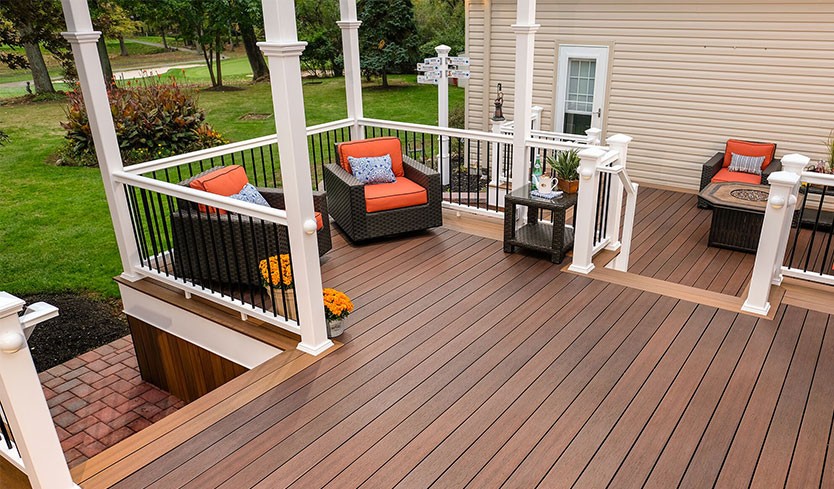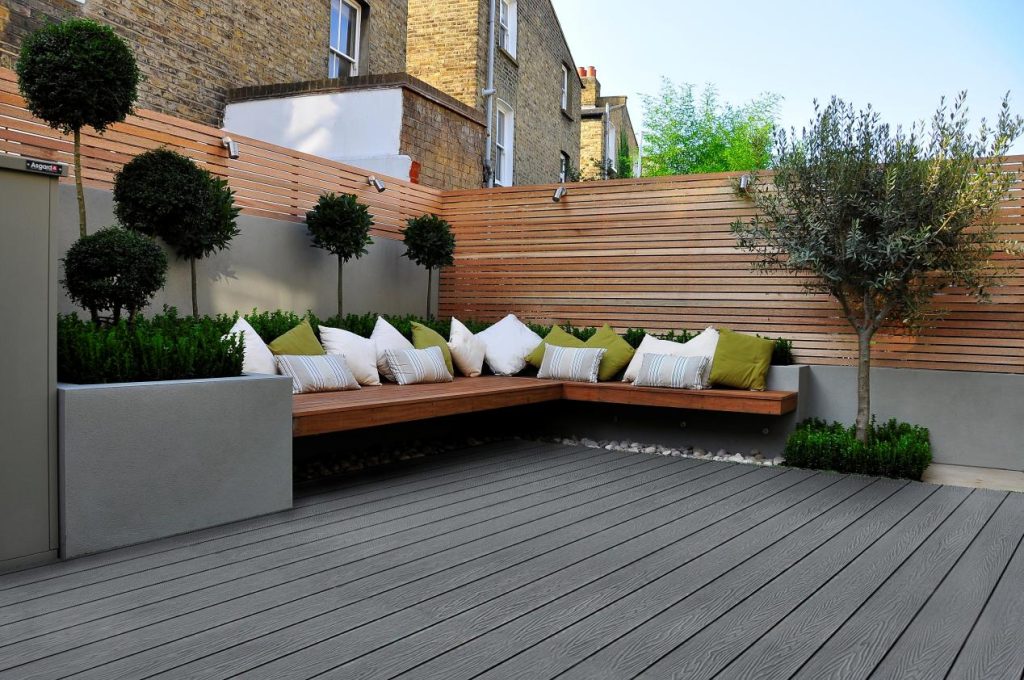In recent years, the demand for composite decking boards has surged due to their many advantages over traditional wooden decking. Among these, wood-plastic composite (WPC) decking boards stand out as an innovative and eco-friendly alternative. As more homeowners, builders, and designers seek durable, low-maintenance decking solutions, WPC boards have become a go-to choice. This article, Hosung will provide a comprehensive overview of the WPC decking boards available for sale, the raw materials used, how to choose the right type for your needs, application scenarios, and the pricing structure per square meter.
Table of Contents
Types of Composite Decking Boards Available in the Market
There are various types of composite decking boards available in the market, each designed to meet specific needs. The primary differences among them are based on the composition, surface finish, and performance characteristics. The most common types include:
Solid Core WPC Decking Boards
These boards have a solid interior structure, providing high-density strength and exceptional durability. They are heavier than hollow-core options and are ideal for applications where strength and resistance to impact are crucial, such as commercial spaces or high-traffic areas.Hollow Core WPC Decking Boards
Hollow-core WPC boards have a lightweight structure with hollow spaces inside. They offer cost savings while maintaining reasonable strength and durability. The hollow design also provides enhanced insulation properties, making them suitable for residential applications.Capped Composite Decking Boards
Capped composite boards feature a protective layer or cap over the WPC material. This cap is typically made of a weather-resistant polymer that protects the board from fading, stains, and scratches. Capped composite decking is particularly popular for its long-lasting beauty and minimal maintenance needs.Uncapped Composite Decking Boards
These boards lack the protective cap but are still designed to be resistant to moisture and decay due to the inherent properties of the WPC material. While they are more affordable, they may require more maintenance over time compared to capped versions.PVC Decking Boards
Some decking boards are made from 100% plastic, not a mixture of wood and plastic. These boards, while not technically WPC, are often included in the composite decking category because they share many of the same benefits. PVC decking boards are highly resistant to moisture, mold, and mildew, making them perfect for wet or coastal environments.
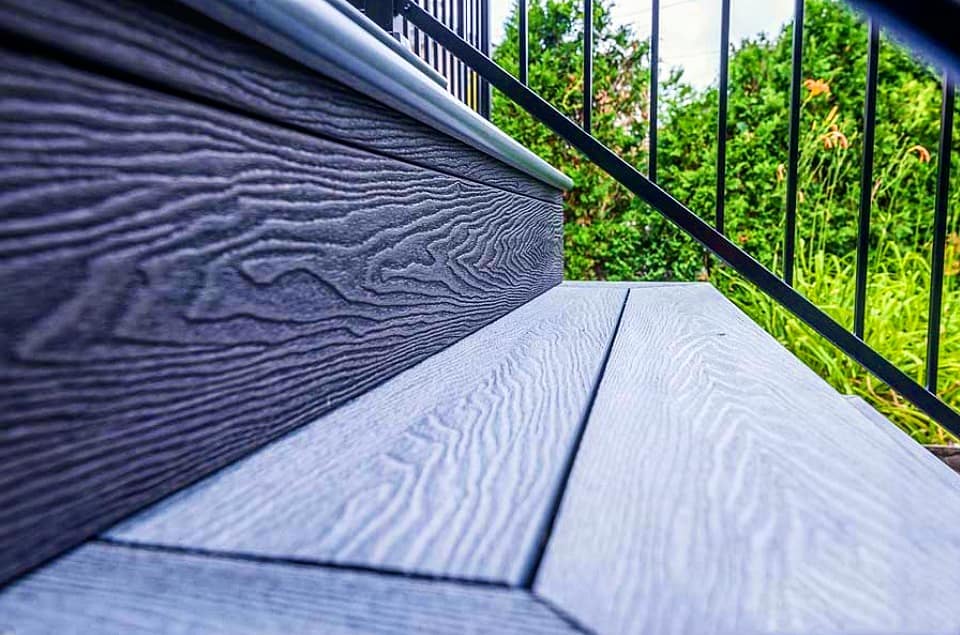
Raw Materials Used in the Production of WPC Decking Boards
The primary materials used in the production of wood plastic composite decking boards include:
Wood Fibers
The wood fibers or sawdust used in WPC decking typically come from recycled wood products such as wood chips, bark, and other wood waste. The use of recycled wood not only contributes to environmental sustainability but also helps to lower production costs. The wood fibers give the composite decking a more natural appearance and feel.Plastic Polymers
The plastic used in composite decking boards is usually a type of recycled high-density polyethylene (HDPE) or polypropylene. These plastics are durable, lightweight, and resistant to weathering. They help bind the wood fibers together, improving the material’s strength and moisture resistance.Additives and Colorants
Various additives, such as UV inhibitors, stabilizers, and anti-fungal agents, are included in WPC decking to improve its performance and longevity. These chemicals help prevent the boards from fading under UV exposure, make them more resistant to mold and mildew, and enhance their durability in harsh weather conditions.Binders and Coatings
Binders are used to keep the wood fibers and plastics together. Some composite decking boards also include an outer coating or “cap” made of a polymer that enhances resistance to scratches, stains, and fading.
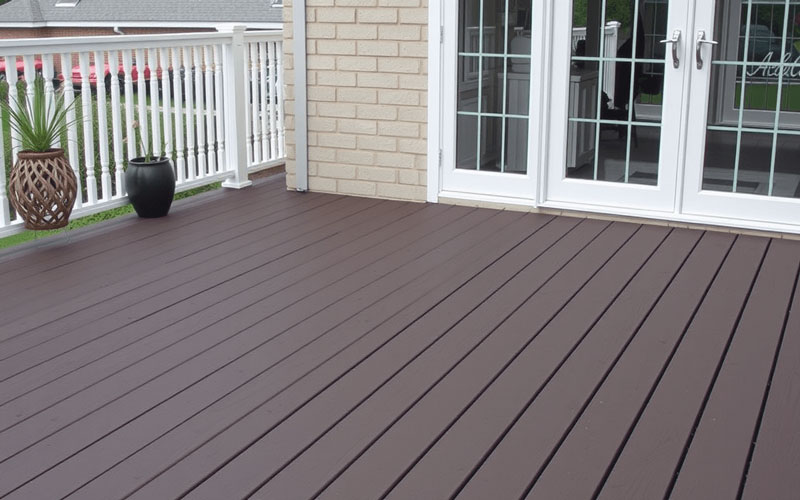
How to Choose the Right Wood Plastic Composite Decking Boards
Choosing the right WPC decking board requires careful consideration of various factors, such as the material, performance, aesthetics, and application needs. Below are some guidelines on how to make the best choice for your project:
Purpose and Application
The first step in choosing the right decking board is to define the purpose and application. For example, if you are installing a deck in a high-traffic area or a commercial setting, you may want to opt for solid core or capped composite boards for their added strength and long-term durability. In contrast, for residential patios or balconies, hollow-core or uncapped boards may offer a more cost-effective solution.Material Composition
Consider the material composition of the boards. Solid core boards tend to be more robust and long-lasting, whereas hollow-core boards are lighter and cheaper. Capped composite boards offer enhanced weather resistance, making them ideal for areas with harsh climatic conditions.Maintenance Requirements
One of the main advantages of WPC decking is its low maintenance compared to traditional wood. However, capped composite boards typically require less maintenance since the cap protects the board from stains and moisture damage. Uncapped boards, while cheaper, may require regular cleaning and maintenance to keep them looking their best.Aesthetic Preferences
WPC decking boards are available in a wide range of colors, finishes, and textures, including wood grain patterns. The choice of aesthetics will depend on your design preferences and how the decking integrates with the surrounding landscape or structure. Keep in mind that some capped composite boards offer a more authentic wood-like appearance than others.Budget and Cost
While WPC decking is typically more affordable than natural wood over time (due to its low maintenance), the initial cost can vary widely depending on the type of board. Capped composite boards tend to be more expensive than uncapped or hollow-core boards. However, the long-term savings in maintenance and replacement costs can make capped options a better investment for many homeowners.
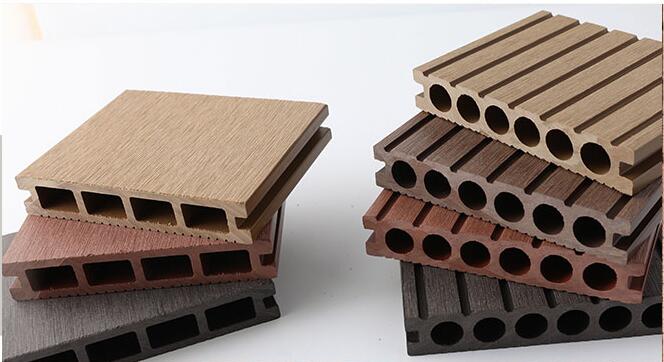
Common Applications of Wood Plastic Composite Decking
Wood Plastic Composite (WPC) decking has gained significant popularity in both residential and commercial applications due to its unique properties such as durability, low maintenance, and aesthetic appeal. The versatility of WPC decking makes it suitable for a wide range of applications. Below are some of the most common uses, along with additional examples:
1. Residential Decks and Patios
WPC decking is commonly used for residential decks, patios, and terraces. These outdoor spaces require materials that can withstand the elements, including exposure to rain, sunlight, and humidity. The moisture-resistant nature of WPC decking prevents it from rotting or warping, a common issue with traditional wooden decking. Additionally, WPC decking is resistant to fading caused by UV exposure, ensuring the outdoor space retains its vibrant look for years. The low-maintenance nature of WPC also means that homeowners can enjoy their outdoor spaces without the constant upkeep required by wood decks, making it a popular choice for backyard retreats, garden areas, and outdoor entertainment spaces.
2. Pool Decking
WPC decking is an excellent choice for poolside areas due to its slip-resistant surface, which provides safety in wet conditions. Traditional wooden decking can become slippery and unsafe near pools, but WPC decking’s textured surface offers better grip, reducing the likelihood of accidents. Furthermore, WPC decking is resistant to water absorption, preventing the material from swelling, cracking, or rotting. Its ability to withstand prolonged exposure to pool chemicals and moisture makes it a reliable option for pool decks, ensuring both durability and aesthetics in these high-moisture areas.
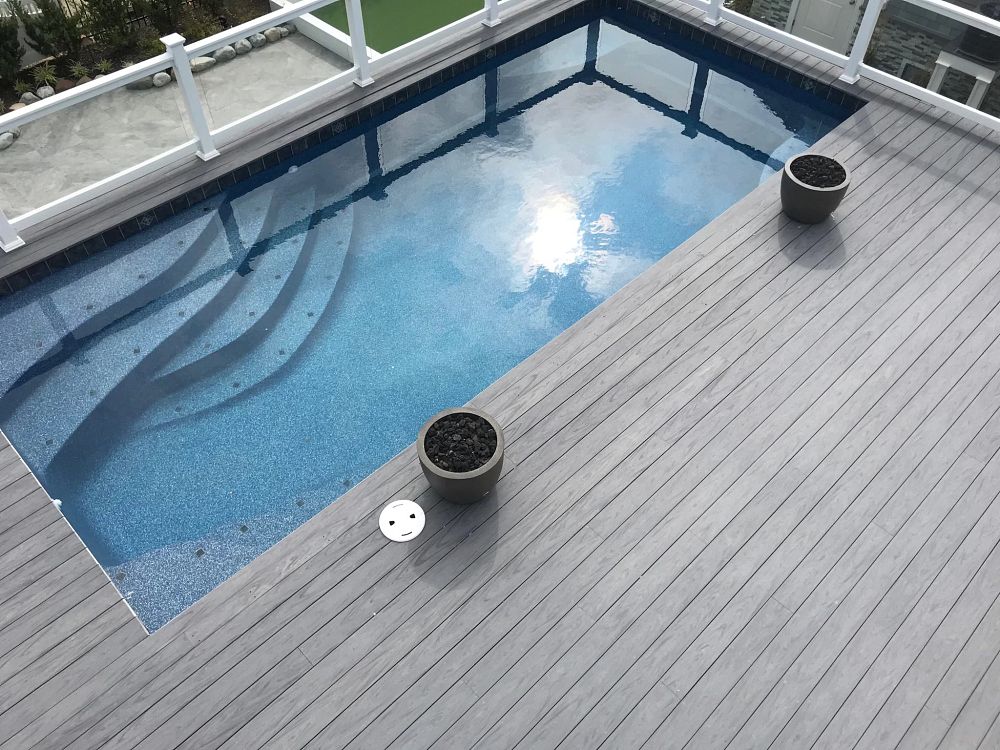
3. Commercial Walkways and Boardwalks
WPC decking’s strength and durability make it an ideal material for commercial walkways, boardwalks, and pedestrian paths. High-traffic public spaces, such as parks, resorts, and boardwalks, require decking materials that can endure heavy foot traffic, extreme weather, and environmental factors. WPC decking boards are designed to resist fading, staining, and scratching, making them suitable for areas that are constantly exposed to foot traffic, outdoor elements, and high temperatures. Additionally, WPC boards are easier to install and maintain, reducing downtime and maintenance costs for commercial property owners.
4. Balconies and Terraces in Apartments
Apartment complexes, particularly those with balconies or rooftop terraces, often use WPC decking for these elevated outdoor spaces. The combination of easy installation and minimal upkeep makes WPC decking an excellent choice for high-rise buildings where the installation process must be efficient and durable. WPC decking’s aesthetic appeal also enhances the appearance of balconies and terraces, offering a modern, sophisticated look that complements the building’s architecture. Moreover, the material’s weather-resistant properties help ensure that these outdoor spaces remain functional and visually appealing, even in harsh urban climates.
5. Landscaping Projects
WPC decking is widely used in various landscaping applications, such as garden walkways, pergolas, fences, and garden edging. The material’s versatility allows it to be integrated seamlessly into different outdoor design styles, whether modern or traditional. Garden walkways made from WPC decking not only enhance the beauty of the landscape but also provide a safe, slip-resistant surface for walking. Pergolas and fences made from WPC are durable and low-maintenance, offering a long-lasting solution for garden structures. Additionally, the material’s resistance to insects and rot makes it an ideal choice for outdoor structures that need to endure the elements.
6. Terrace and Roof Gardens
WPC decking is increasingly used for terrace and roof gardens due to its lightweight properties and ability to withstand the rigors of rooftop environments. Roof gardens are particularly susceptible to extreme weather conditions, and WPC decking offers protection against water infiltration, preventing damage to the roof structure. The aesthetic appeal of WPC also helps create an inviting and functional space in urban areas where outdoor space is limited. With the added benefit of insulation, WPC decking can help moderate temperature fluctuations, making the space more comfortable year-round.
7. Commercial and Residential Docking Areas
WPC decking is also ideal for docking areas, including private docks and commercial marina walkways. Exposure to saltwater, sun, and wind can degrade traditional wooden decking materials over time, but WPC decking’s resistance to corrosion, moisture, and UV rays ensures a longer lifespan. Its durability is particularly valuable in coastal areas, where frequent exposure to harsh marine environments can quickly damage other decking materials.
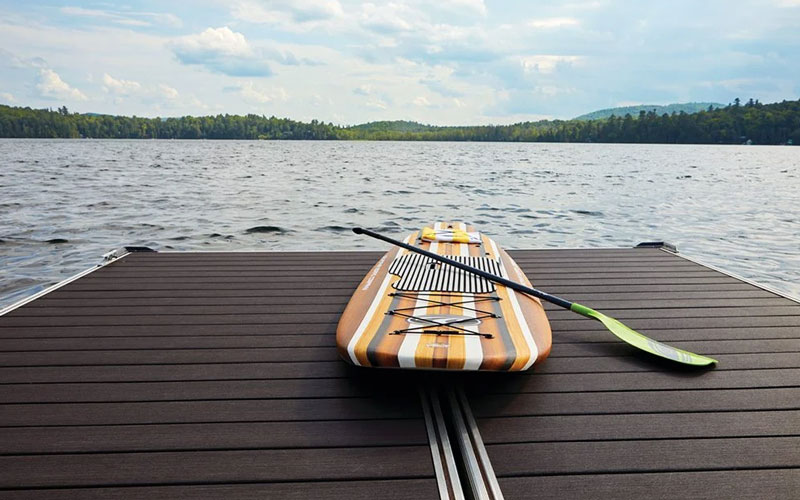
8. Public Parks and Recreational Areas
WPC decking is frequently used in public parks, recreational areas, and nature reserves due to its environmental benefits and ability to blend seamlessly with the natural surroundings. It provides a safe, stable surface for walking trails, benches, and viewing platforms while requiring minimal maintenance. Because WPC decking is made from recycled wood fibers and plastics, it aligns with sustainability goals in green spaces, helping park authorities reduce their environmental footprint.
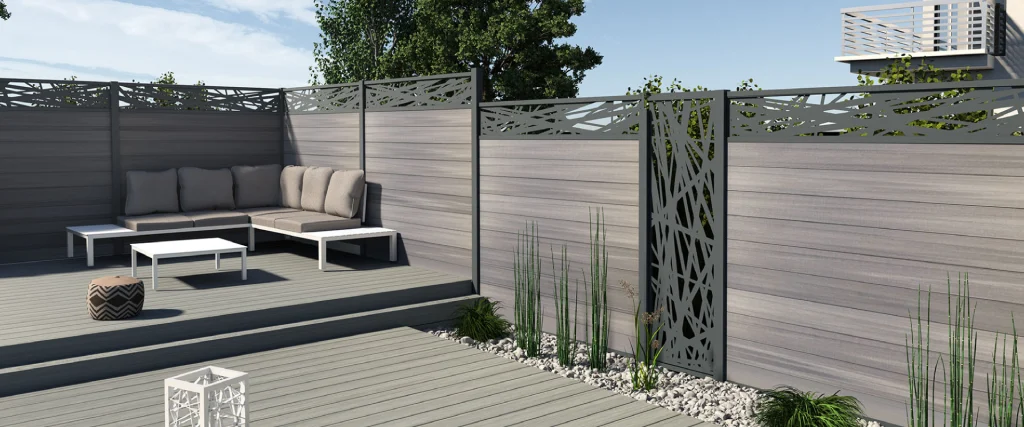
Pricing of Wood Plastic Composite Decking Boards
The cost of WPC decking boards can vary based on the type, brand, and quality. On average, prices for WPC decking boards typically range from $15 to $40 per square meter, though this can vary by region and specific supplier. Factors that influence pricing include:
Board Type
Solid core and capped composite boards are generally more expensive than hollow-core or uncapped options due to their durability and weather resistance.Brand and Quality
Well-known brands offering high-quality WPC decking products tend to be more expensive but may provide better performance and longer-lasting durability.Size and Thickness
Larger or thicker boards typically come at a premium price due to the increased material costs.Customization Options
Custom colors, textures, and finishes may also increase the cost of the decking boards.
As a rough guide, a standard capped composite decking board may cost between $25 and $35 per square meter, while a hollow-core option might cost between $15 and $25 per square meter. Installation costs should also be considered, which typically range from $10 to $20 per square meter, depending on the complexity of the installation.
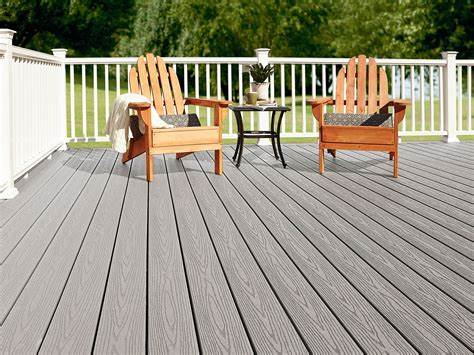
Conclusion
Wood plastic composite decking boards are a superior choice for anyone looking for an aesthetically pleasing, durable, and low-maintenance decking solution. With various types of boards available on the market, understanding the materials, performance characteristics, and applications is essential to making an informed decision. Whether you’re working on a residential deck or a commercial walkway, WPC decking provides an excellent balance of beauty, strength, and long-term performance. By carefully considering your specific needs and budget, you can select the perfect WPC decking boards for your project.

